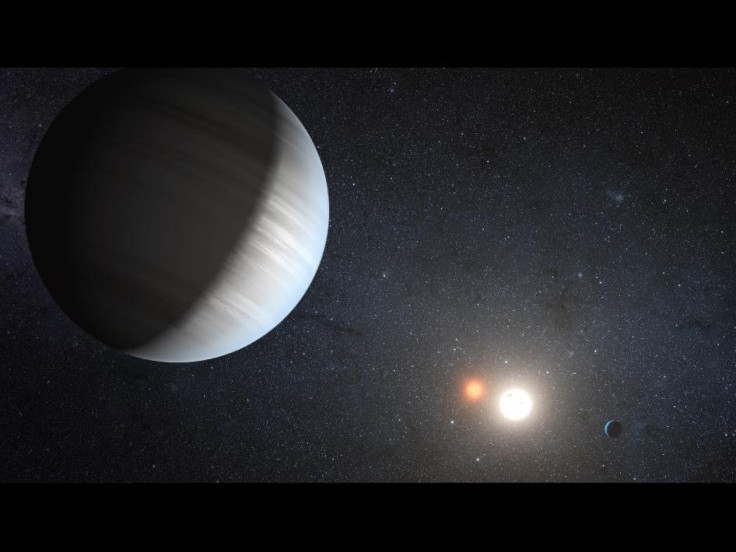Tatooine Times Two, Planet In Four-Star System Discovered By Amateur Astronomers

Amateur astronomers helped find a bizarre planet comparable only to the likes of Star Wars; as the alien world orbits two suns, it is orbited by two other suns.
The planet, called PH1 is a Neptune sized gas giant and is circumbinary, having two parent stars, similar to the fictional planet Tatooine the famed childhood home of Luke Skywalker. PH1 however has a twist; as it orbits its stars every 138 days and its stars orbit each other every 20 days, a second pair of stars orbits the whole system from 93,000,000,000 miles away.
“It's fascinating to try and imagine what it would be like to visit a planet with four Suns in its sky, but this new world is confusing astronomers - it's not at all clear how it formed in such a busy environment,” said Dr. Chris Lintott, of Oxford University, a member of the Planethunters.org team.
According to the Daily Mail, the view from PH1 would show a double sunset with two extremely bright stars far off in the night sky.
Kian Jek of San Francisco, Calif., and Robert Gagliano of Cottonwood, Ariz, initially viewed the planet and its four suns through the Kepler space telescope by using the transit method, in which researchers look for faint dips in light as planets pass (or transit) in front of their parent stars, Fox News reports.
Jek and Gagliano are volunteers with the Planet Hunter project; led by a Yale Univeristy team that gives amateur astronomers the opportunity aid in the discovery of new planets.
Professional astronomers have since confirmed the existence of PH1 and its four suns, but Jek and Gagliano are credited with the find.
"It's a great honor to be a Planet Hunter, citizen scientist, and work hand in hand with professional astronomers, making a real contribution to science," Gagliano told Fox News.
Yale University researchers reporting on the discovery say that PH1 is providing new questions for them to answer.
"The discovery of these systems is forcing us to go back to the drawing board to understand how such planets can assemble and evolve in these dynamically challenging environments," said researcher Meg Schwamb.
© Copyright IBTimes 2024. All rights reserved.












